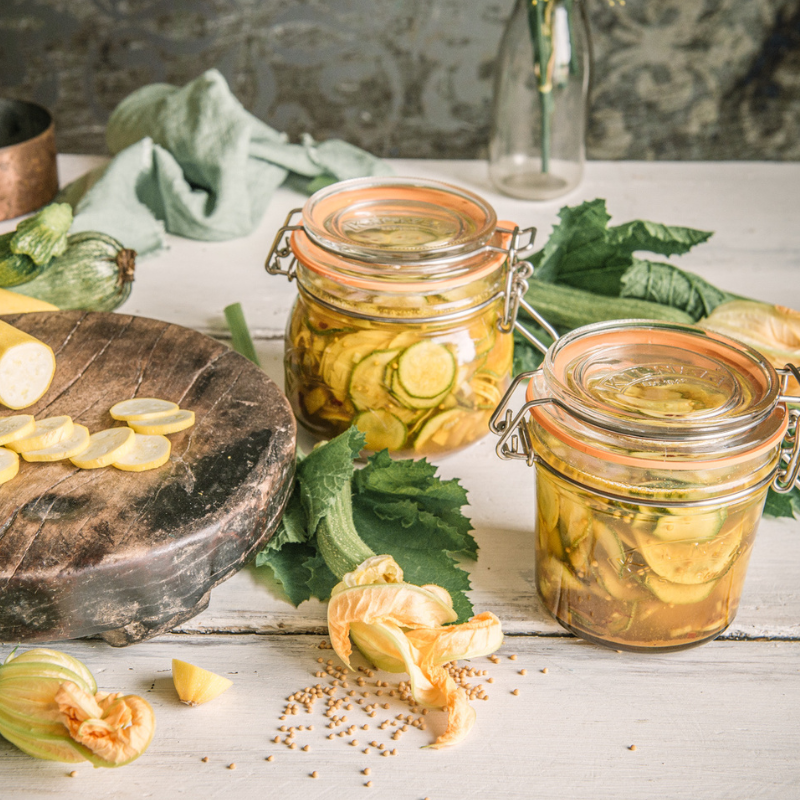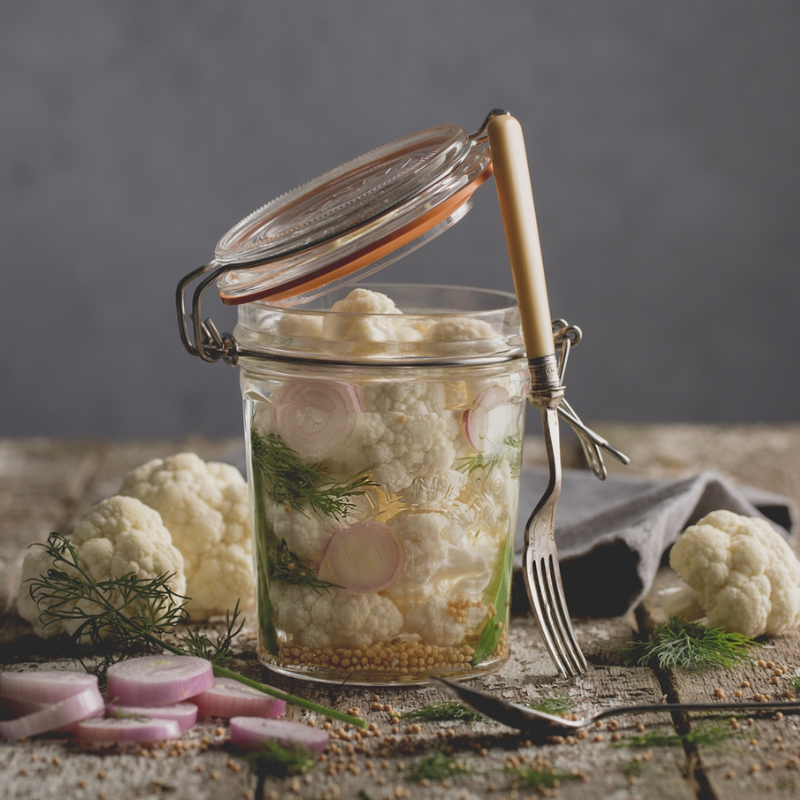Checklist for Pickles
Pickling season typically starts in September but pickling at home all year round is a fantastic cost-saving alternative to shop-bought pickles.
Pickles are an easy preserve to make provided you are well prepared. Since pickles can be made from almost every fruit and vegetable, it's important to use high quality ingredients and produce to get the best result. Your main priorities are the raw ingredients, a good, spiced vinegar, and the maturing period you allow before opening them. For flavourful pickles and an easy pickling process, follow our useful checklist.
Pickling Equipment
The great thing about pickling is that most of the equipment can be found already within your kitchen. However, there are some essential tools needed for particular processes and many of these specialist items can be found within the Kilner® Range.
1. Spatula
Perfect for safely stirring large volumes of hot liquid, a spatula is essential to the pickling process. Look out for spatulas with built-in safety hooks and a bubble remover, ideal for removing bubbles before processing and eliminating the risk of the spatula sliding into the pan.
2. Preserving Pan
Whether sterilising your favourite Kilner® Jars or preparing delicious recipes, preserving pans are a great addition to your pickling kit with a sturdy handle and pouring lip.
3. Clip Top Jars
What better way to store your pickles than with one of our traditional Kilner® Clip Top Jars? These jars are available in a range of sizes and shapes and are complete with replaceable rubber seals.
4. Jar Funnel
Our practical funnel fits any sized Kilner® Preserve or Clip Top Jars, allowing you to fill jars quickly and easily without spillage and waste.
5. Preserve Jars
Also offering a great way to present your pickles and preserves, our Kilner® Preserve Jars come in a range of different sizes and are finished with a replaceable vacuum seal lid and screwband.
6. Jar tongs
With heat-resistant arms, the Kilner® Jar Tongs will allow you to grip and remove hot sterilized and processed jars from hot water.
Pickling Ingredients
Picked foods offer a great way to improve digestion and gut health, with pickled and fermented foods containing a high concentration of vitamins such as Vitamin K, Vitamin C, and Vitamin A.
Whilst there are several pickling methods, there are certain ingredients that are needed for all types of pickling. Fresh produce, vinegar, salt, sugar, water, and spices are all crucial ingredients in the pickling process.
Why not take a look at some of our favourite pickling recipes
Pickling Preparation
When it comes to pickling, preparation is key!
Once you have sourced all your equipment, be sure to sterilise your jars before use. Sterilisation is a crucial part of the pickling process as it removes any bacteria or yeast that is living in the jar, allowing you to preserve your foods in sealed jars for longer.
Next, it is time to get your space ready with all the tools and ingredients you will need for your pickling. For best results, avoid picking under-ripe vegetables as they won’t be fresh enough to preserve. Wash and chop your vegetables into the shape in which you wish for them to be pickled and gather all the flavourings needed for your brine.
Pickling Step by Step
You can pickle pretty much anything you like! Grab your chosen vegetables, vinegar, a few spices and follow our handy pickling tips to get started.
Rinse and Drain
Always make sure to rinse and drain your prepared fruit and vegetables after you have salted them. Giving your fruit or vegetables a salt bath (covering them in salt in a bowl) before pickling them helps to draw out any excess water they may be holding. It helps to preserve the crisp texture through the pickling process. Leave them in salt for 30 minutes – 3 hours, depending on how much time you’ve got.
Do not pack fruits or vegetables too tightly
To prevent your pickled vegetables or fruit from bruising do not pack them too tightly when you come to pot them. You can use any Clip Top or Wide Mouth Jar for pickles, but we recommend our Wide Mouth Jars for pickling vegetables like carrots and asparagus. The wider opening allows for easy filling and decanting.
Leave no less than 2.5cm of space at the top of jars
You must make sure to leave enough room at the top of the jars for a good amount of vinegar to be added to the fruit or vegetables. We recommend leaving no less than 2.5cm. Larger, longer vegetables like green beans and cucumbers fit best in our Wide Mouth Preserve Jars, particularly the 1 litre Jar. Our smaller, 0.2 Litre Wide Mouth Preserve Jars are perfect for pickling garlic, red onions and smaller fruits and vegetables. Our larger Clip Top Jars are ideal for chunkier produce like pumpkins, plums, and cauliflower.
Store your pickles for at least four weeks
It is important to let your pickles mature in flavour before you open them. It's best to store them in a cool, dry, dark place for at least 4 weeks but remember the longer you leave your pickle to mature the more intense the flavour will be when you open them.
Types of pickling - What is the pickling process?
Vinegar-based pickling is known to be a much faster process than fermentation, but did you know that there are three ways to 'pickle' your fruit or vegetables? Each method has their own benefits, read on to discover which method suits you.
1. Quick Pickling
Quick pickling involves boiling a vinegar solution, pouring it over your chosen selected fruit or vegetables then leaving it in the fridge to 'pickle'. Quick pickles can be created in a few days or even hours, they don't have as much depth in flavour but what they lack in depth they make up for in freshness. These are perfect for adding freshness to salads or using up vegetables in your fridge.
Why not try our pickled carrot recipe to spice up your salads or pickled red onions to go in your next burger?
2. Brine Pickling
Pickling in its most traditional sense is the process of preserving fruit or vegetables in a hot, vinegary brine, then keeping them in a glass jar to prolong their shelf life. The process aims to draw the maximum amount of water out of the vegetables by soaking, draining, and soaking again using a vinegar solution. The result takes longer and the jars are left in a cool, dry place rather than in the fridge.
Why not try our pickled cucumber recipe to start?
3. Salt Vinegar
Salt-brined pickles are used with vegetables that have a particularly high-water content. Salt brining or dry salting is often carried out on the vegetables first, rinsed well and then the process of pickling in vinegar continues as above. The salt must be pure sea salt or rock salt rather than table salt so as to be free of any additives.
What is pickling vinegar?
Pickling vinegar is used alongside water to preserve vegetables, any vinegar can be used but white vinegar is the most popular. Vinegar is an essential part of the pickling process - and choosing the vinegar you use to pickle with can change the taste and the end result of the product you're preserving.
What is the difference between a pickle and a chutney?
Looking to make a pickle or a chutney but not really sure what the difference between them is? These sweet and sour preserves are relatively easy and cheap to make, you are no longer concerned with pectin and acid levels, only flavour, spice, and bite.
Pickles and chutneys need time to mature in flavour after making them, so we recommend leaving them for up to 10 weeks before opening to allow the flavours to fully develop.
Although often grouped together as one preserve, the differences between pickles, chutneys and relishes are distinctive.
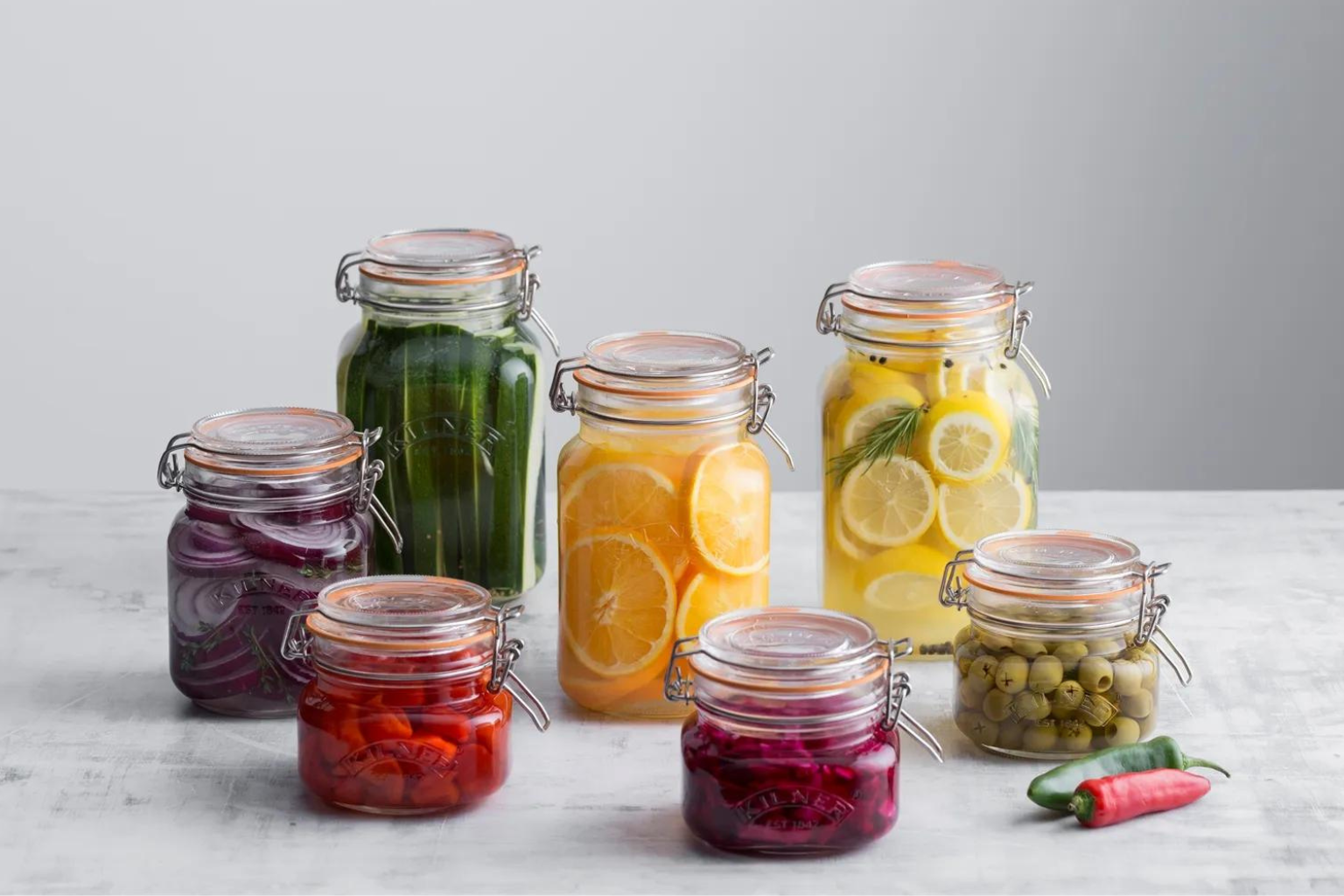

Clear Pickles
Recommended shelf life: 2 years. Once opened, store in the fridge and consume within 2 weeks.
Making clear pickles is a traditional way of preserving vegetables which dates a long way back in British history. The vegetables used for clear pickles are often left raw and whole and the main ingredients used are vinegar and salt with sugar, honey, herbs and spices added only for extra flavour.
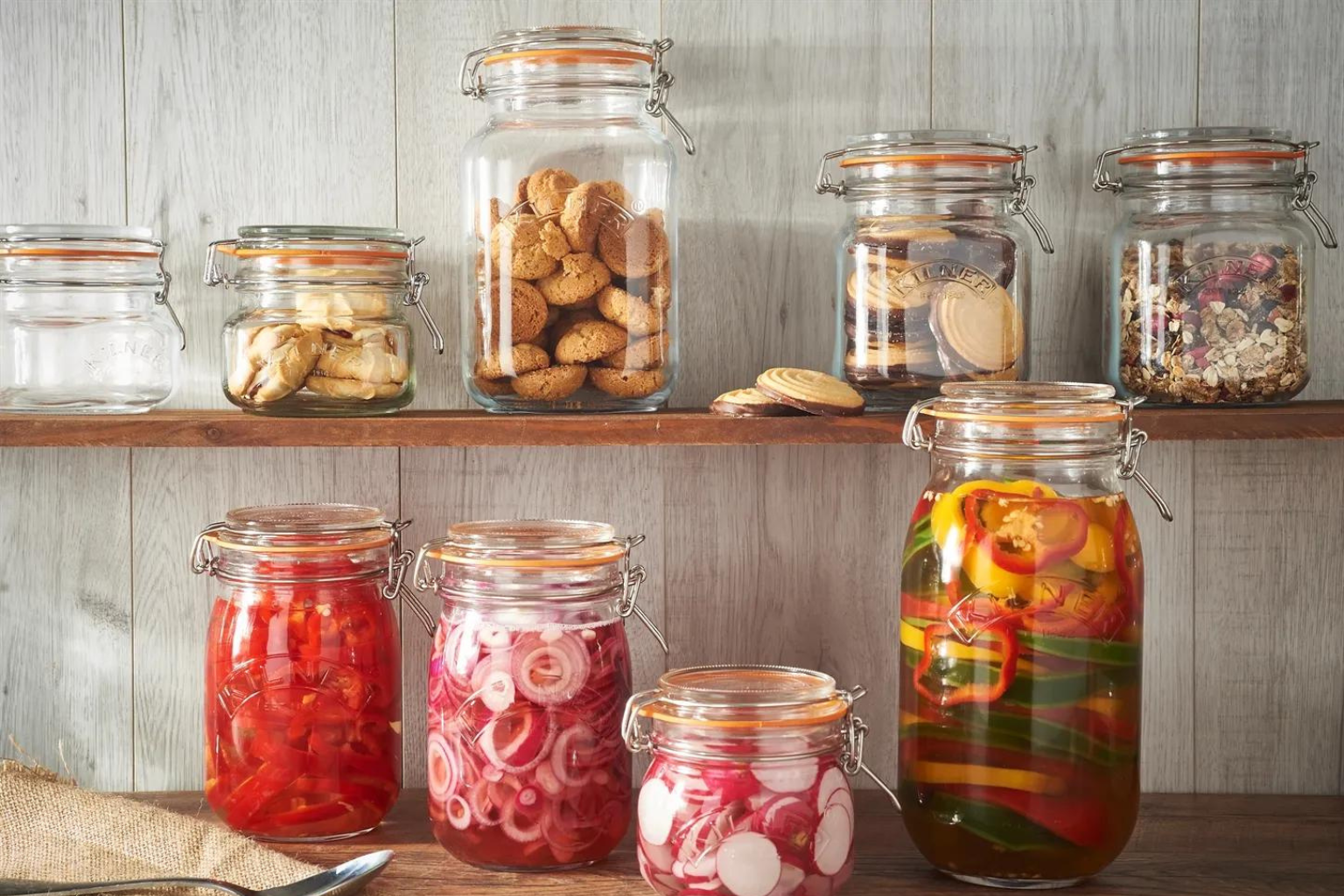

Sweet Pickles
Recommended shelf life: 2 years. Once opened, store in the fridge and consume within 2 weeks.
Sweet pickles are a mix of lightly cooked vegetables and sweet vinegar. The vegetables are generally kept in large pieces. Common ingredients which are used to add flavour to sweet pickles are spices such as ginger, all spice and cloves. You can make a slight variation by thickening the vinegar using cornflour and make the most common of all pickles 'piccalilli'.
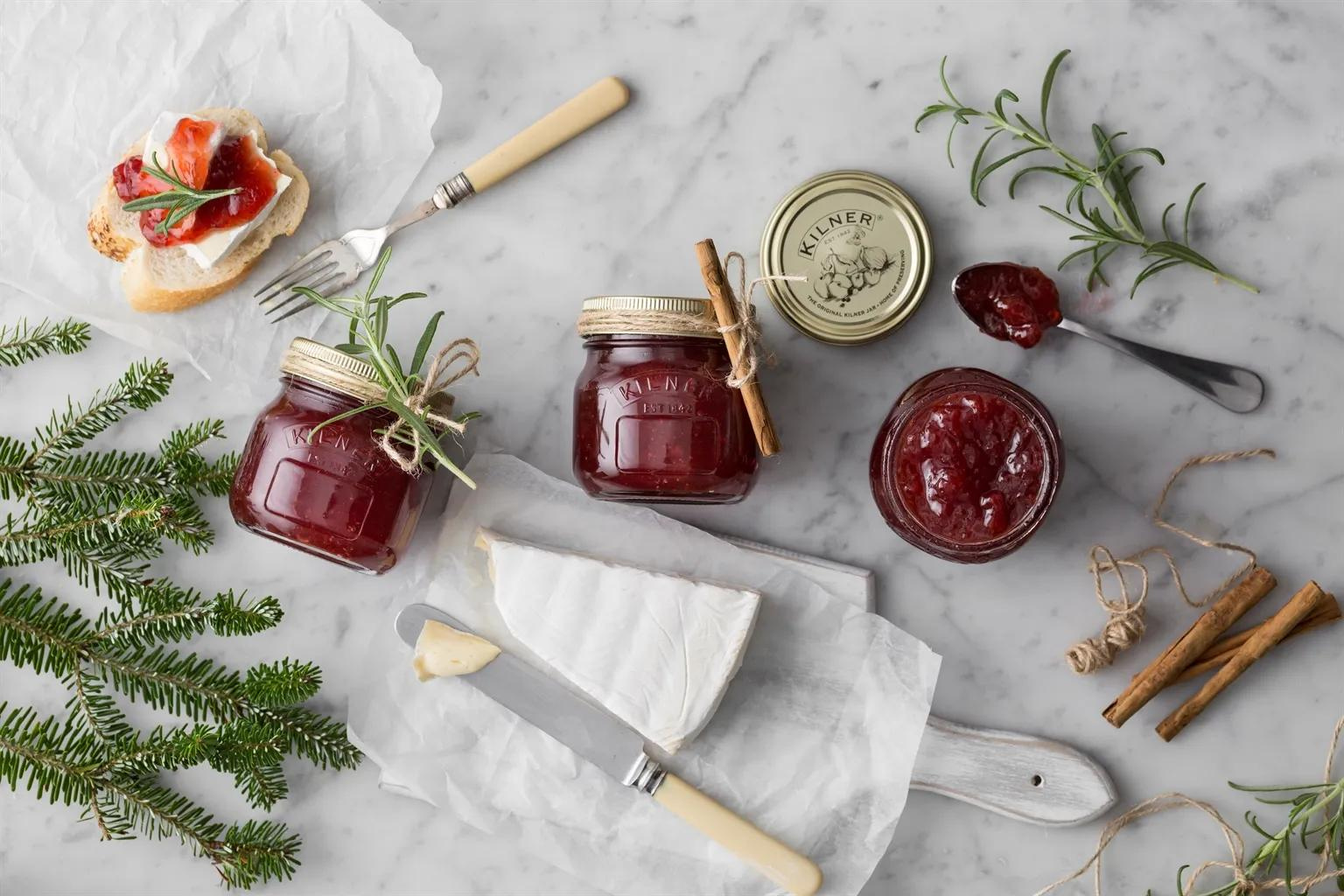

Chutneys
Recommended shelf life: 2 years. Once opened, store in the fridge and consume within 2 weeks.
Originally learned from the Indian colonies in the nineteenth century, traditional British chutney is a sharp, sweet, rich and highly spiced preserve made using a mix of fruit and vegetables which is cooked for a long time. The fruit and vegetables need to be cut into small pieces and the resulting mixture should be easy to spoon and spread.
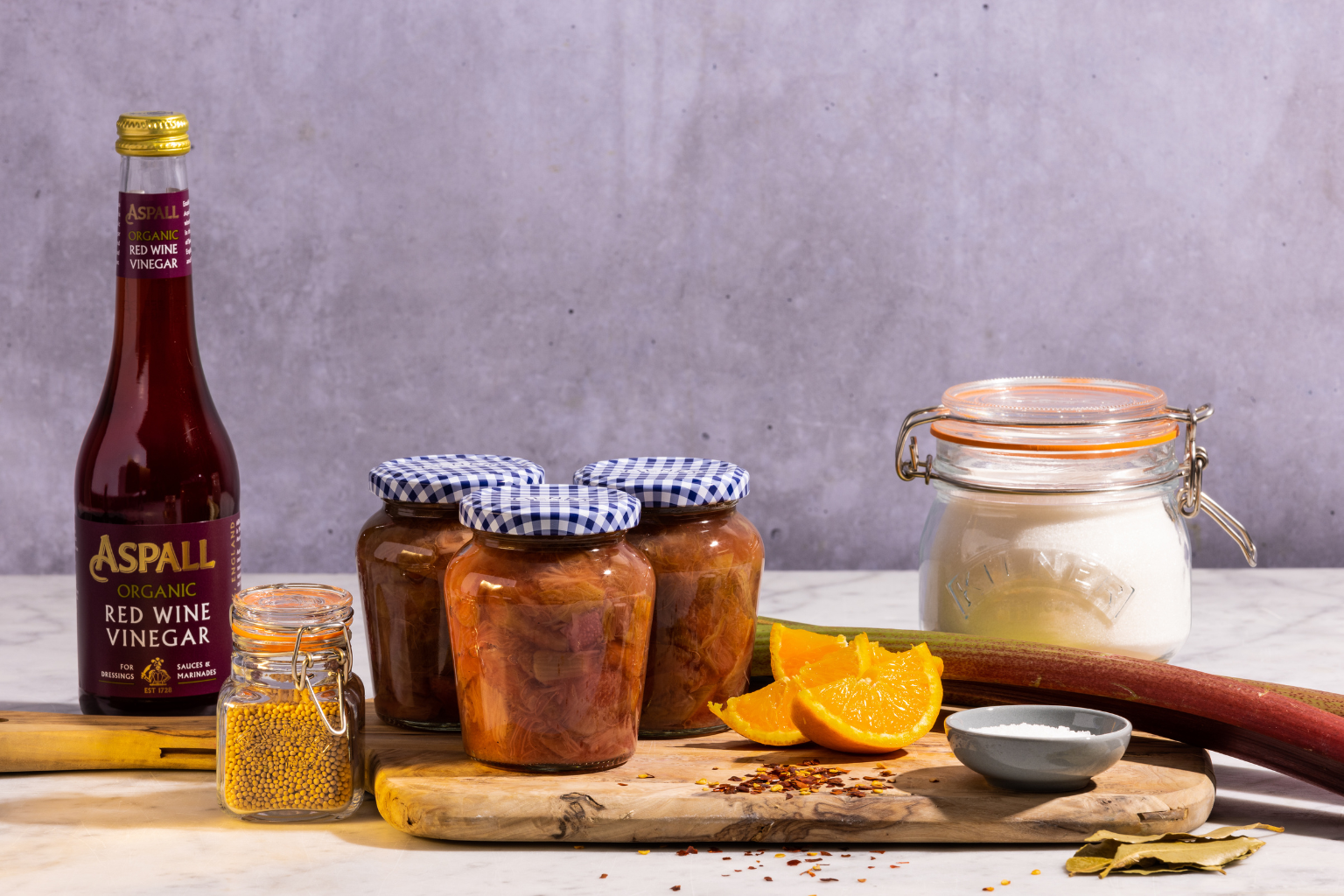

Relish
Recommended shelf life: 6 months. Once opened, store in the fridge and consume within 2 weeks.
Relishes are made from a mixture of fruit and vegetables which have been diced and are then cooked for a short period of time. Relishes tend to be spicy and sweet and sour all at the same time. Relishes do not need time to mature like pickles and chutneys and they must be stored in the fridge after opening.



